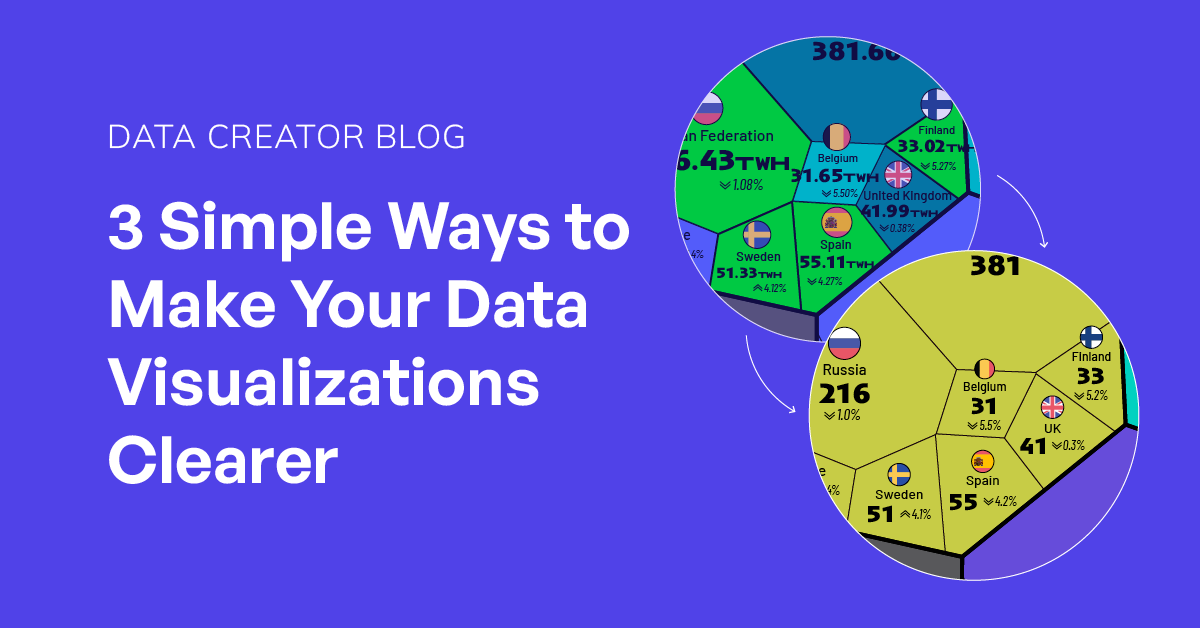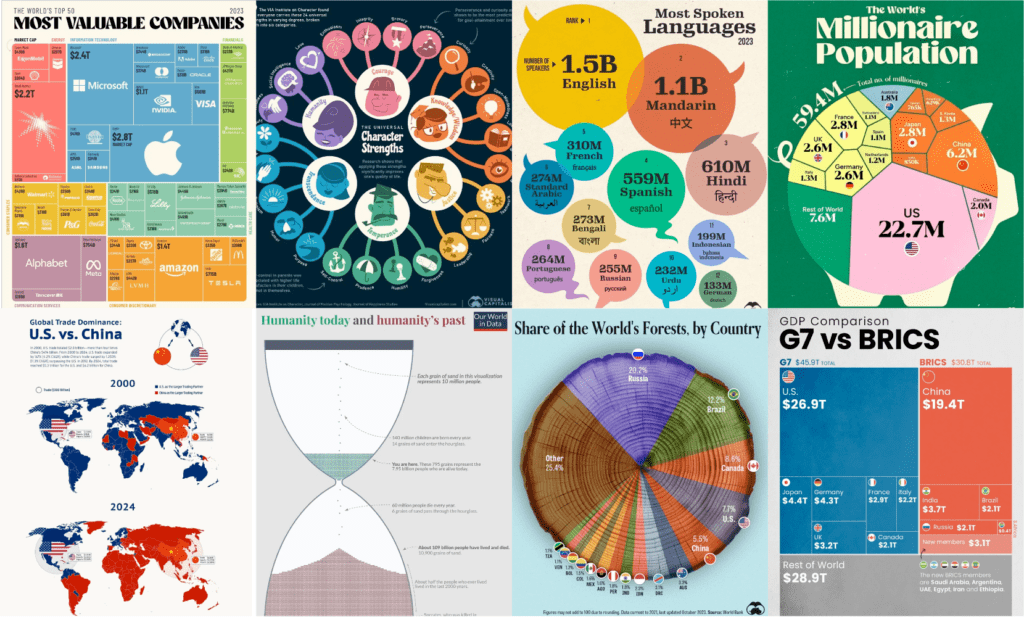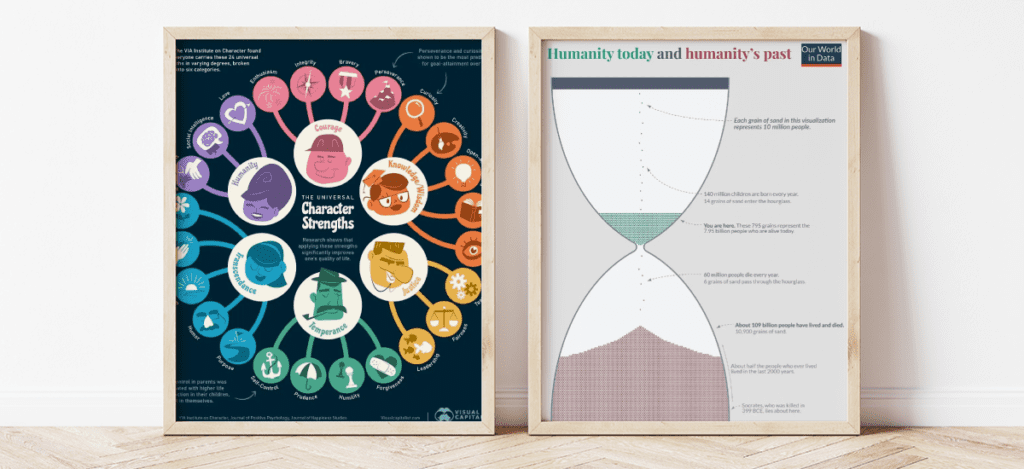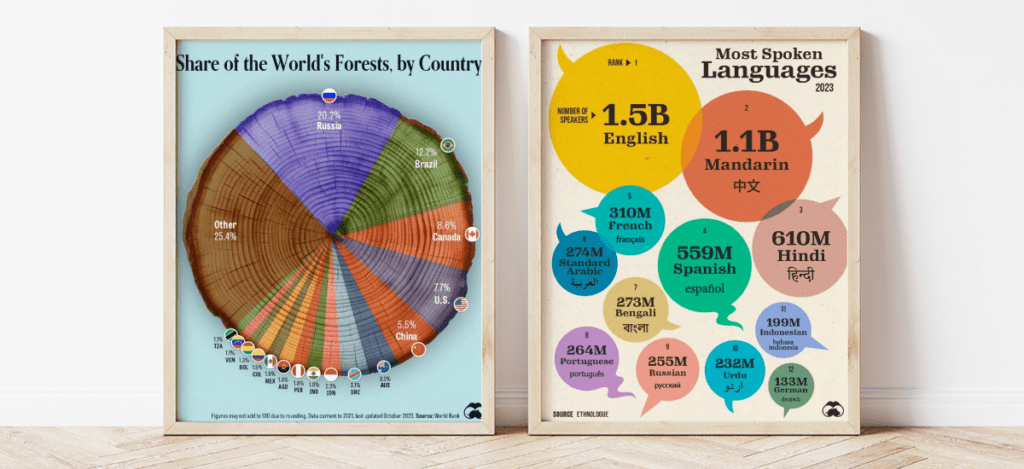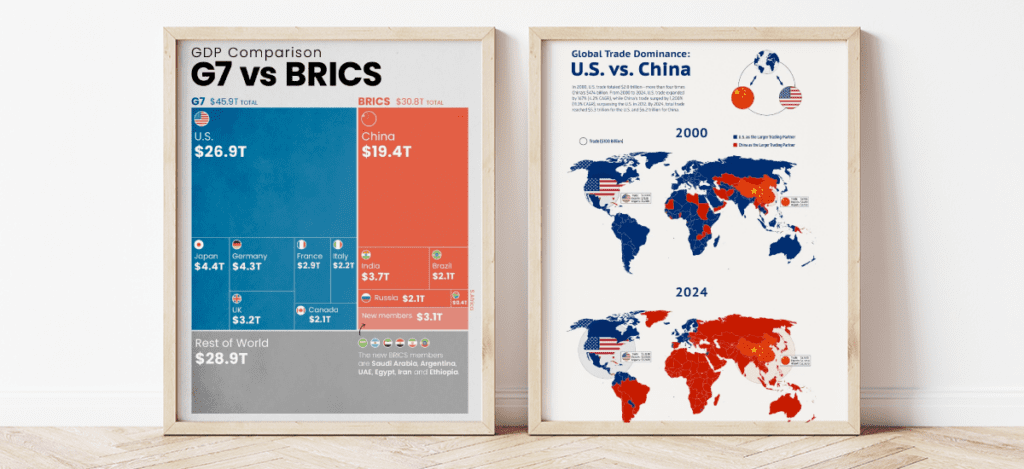3 Simple Ways to Make Your Data Visualizations Clearer
In the fast-paced world of online content, data visualizations have to work hard. They need to be clear, concise, and immediately understandable—especially for audiences scrolling on mobile. Small design missteps can easily distract from the story you’re trying to tell.
Here are three simple but powerful tips to help your charts and graphics cut through the noise.
1. Simplify Labels and Numbers
One of the most common problems we see is label clutter. When space is tight—especially in charts with many small values—overly detailed labels can overwhelm the visual. This happens when creators use too many decimal places or insist on listing full official names for countries or companies.
Ask yourself:
- How precise does this really need to be? For example, is 213.456 million necessary, or will 213M do the job?
- Is brevity clearer? Instead of spelling out Democratic Republic of the Congo, could you simply use DRC?
Small tweaks like this can make your graphic cleaner and easier to digest.
2. Focus on One Main Chart
It’s tempting to try to tell your whole story in one big graphic. In fact, a decade ago, it was still fairly normal to create expansive long form infographics (like this classic Visual Capitalist post on Jade). But today, attention spans are shorter, and most content is consumed on small screens. You need to get your point across quickly.
Trying to show two or three charts in the same space often dilutes your message. If you must include extra charts as supporting data, either:
- Give one chart clear priority and design the rest as secondary, or
- Split the information into a slideshow or separate visuals.
A single, well-executed chart will have more impact than several competing for attention.
3. Save the Context for the Caption
Some data-driven stories spark a lot of questions and deserve deeper explanation. But cramming paragraphs of text into the visual and title itself—especially for mobile audiences—makes it instantly less shareable.
Instead, provide just enough context in the graphic so it’s still understandable if shared on its own. Then, use the caption, article, or accompanying post to offer the full background and nuance.
This approach keeps your visuals clean, while still ensuring that those who want more detail can get it.
The Bottom Line
Clarity is your best friend in data visualization. By simplifying labels, focusing on one main visual, and moving extra context to supporting text, you can make your graphics more effective, accessible, and shareable—without losing any of their storytelling power.
Got a data story that follows these principles?
